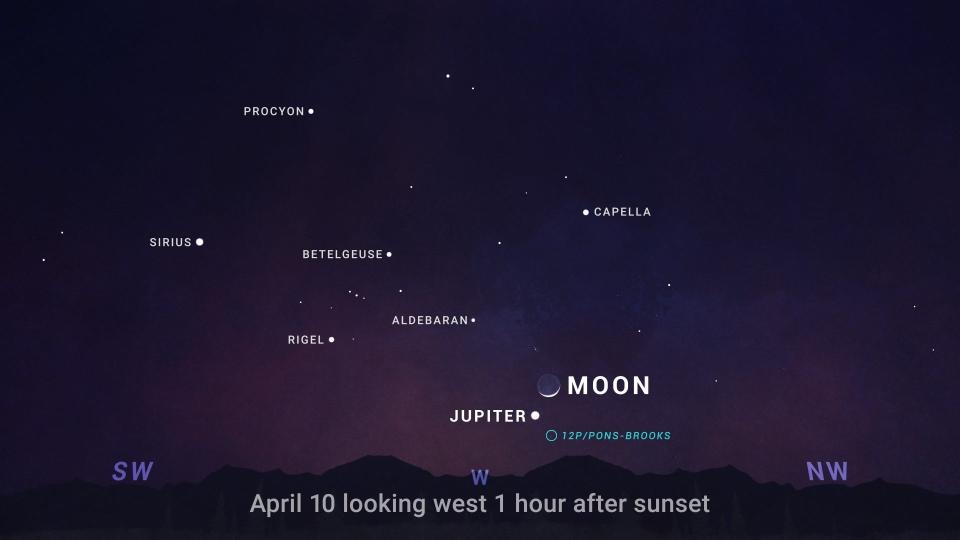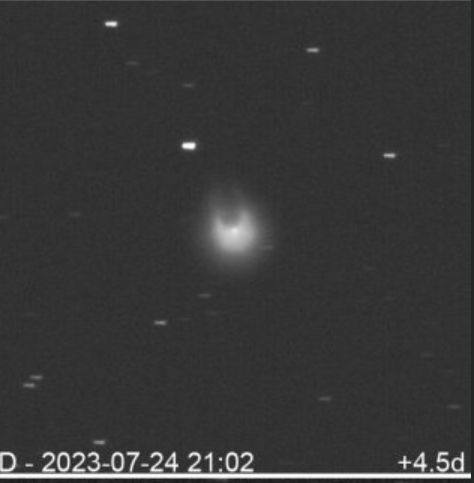Watch the sky, the 'devil comet' is passing by the earth. Here's how to get a glimpse
The total solar eclipse has passed, but there's more to see in the sky. The "devil comet" is passing by and can be seen just after sunset, according to NASA.
Here's how you can catch a glimpse.
What is Comet 12P/Pons-Brooks, the 'devil comet?'
Comet 12P/Pons-Brooks is one of the brightest known comets, coming around every 71 years, according to NASA. It earned the nickname of “devil comet” in 2023 when an outburst caused the comet to have an asymmetrical appearance, similar to having horns. It is currently getting brighter as it flies toward the sun.
The comet is officially named for the astronomers credited with its first two sightings: Jean-Louis Pons in 1812 and William Robert Brooks in 1883, according to The Sky Live, which provides information and charts for celestial objects.

How to see the 'devil comet'
According to NASA, it might still be possible to see the comet with the naked eye, though by mid-April it will be too close to the sun and then getting dimmer as it moves away from the sun.
The comet is best viewed with binoculars or a small telescope, according to NASA.
As soon as the sun dips below the horizon, look west just beneath the moon and just right of Jupiter. An hour after sunset, the comet drops so low that it will be difficult to see without a perfectly clear view of the horizon. The comet then sets an hour later.
When is the best time to see the comet?
The comet will make its closest approach to Earth on June 2, when it will be about 144 million miles from our planet and offer another opportunity to see it. By July, it will be too dim to view even with binoculars.
Does the 'devil comet' pose a threat to Earth?
The "devil comet" has a well-established orbit that does not bring it close enough to Earth to present the threat of collision, astronomers say.
Its proximity to Earth is close enough for NASA's Jet Propulsion Laboratory to classify 12P/Pons-Brooks as a "near Earth asteroid." But computer simulations have not indicated any likelihood of collision anytime soon, according to spacereference.org.

Where are comets found? What is the definition of a comet?
According to NASA, comets are frozen chunks of dust, rock and ice leftover from the formation of the solar system. They range is size from a few miles wide to tens of miles wide. As they approach the sun, they heat up and spew dust and gas, creating a glowing head and trailing tail.
The current number of known comets is about 3,910, but here are likely billions of comets orbiting the sun in the Kuiper Belt beyond the orbit of Neptune and even more distant Oort Cloud.
Eric Lagatta of USA TODAY contributed to this report.
This article originally appeared on Record-Courier: See the 'devil comet' as it passes by the earth. Here's how

